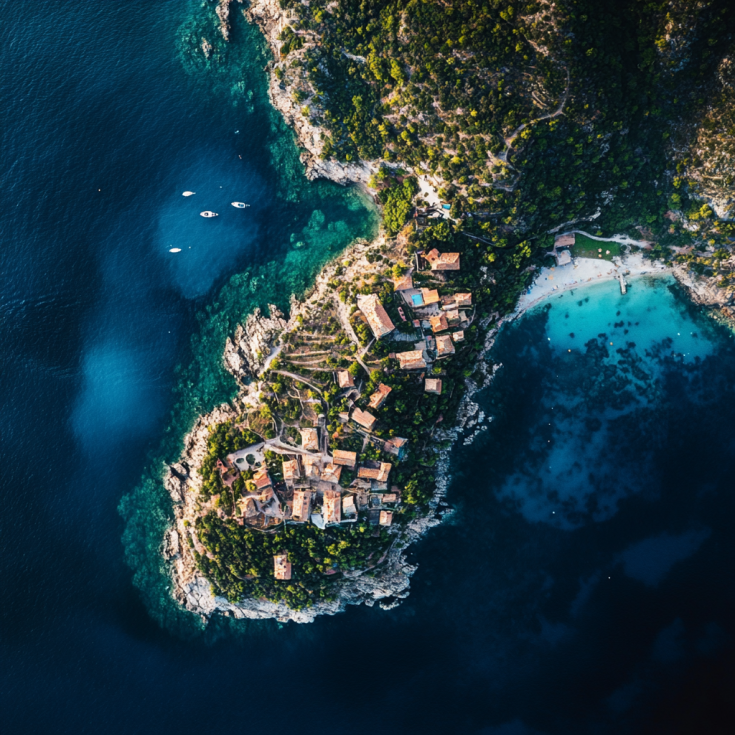Islands: testbeds of innovation?

For several decades, the Cohesion Policy has been striving to ensure equal development possibilities across the EU countries and regions. But territorial cohesion is not yet fully there. The geographical contexts of certain areas call for specific attention and dedicated measures. This is the case of islands, whose economic development faces unique challenges. Tailored policies should be put in place to alleviate their burdens.
What hinders islands’ local economies
According to the study Islands of the European Union: State of play and future challenges (EU Parliament, 2021), islands’ challenges largely stem from geographic isolation and physical discontinuity with the continent. Shipping goods and transporting people to and from islands is often more expensive than on the mainland, raising the cost of living and doing business.
Many islands are heavily reliant on tourism, which can be highly seasonal and sensitive to external shocks such as economic downturns or pandemics. Smaller populations mean limited local markets, which can restrict the businesses’ growth potential and make it harder to attract investment. Islands rely on limited natural resources, such as freshwater, arable land, and energy, which can increase vulnerability to supply disruptions. Young and educated individuals often leave for better opportunities elsewhere, reducing the local talent pool and weakening the workforce.
Infrastructure can be costly to maintain and upgrade, from roads and ports to energy grids and water systems. Insufficient internet connectivity can hamper modern business operations, education, and healthcare. Finally, rising sea levels, increased frequency of extreme weather events, and erosion are significant threats. These environmental challenges can damage infrastructure, disrupt economies, and reduce habitability.
Learning from success: roadmaps explored in Interreg Europe
Members of the Interreg Europe community have worked together on these development challenges. From the experience gained on the ground, they all share a vision where islands do not compete with other geographical contexts and cannot claim similar approaches for development. Here are some development paths emerging from the experience gained on the ground:
-
Valorise the specificities of an island being an island
The challenges listed above can make islands a suitable place for being a living lab and testbed for innovative solutions addressing connectivity, health, mobility or renewables. A clear positioning is required, aiming to create a high-level technical infrastructure with flagship character. Such initiatives have the potential to attract SMEs, who want to test their product or service, as well as further private and public investments in R&D. They also offer the opportunity to take part in transnational networks of such living labs/testbeds offering a coordinated offer/access to test infrastructures.
-
Harness digital transformation
Besides investing in digital infrastructures, a broad initiative to increase the innovation capacities of existing SMEs through digital competencies has the potential to generate long term economic benefits, as well as provide job opportunities for qualified workers.
-
Focus on the right sectors
While a strong economic dependency on agriculture and tourism represents a risk, those sectors also offer opportunities for a strong positioning in the blue economy, the agri-food sector and sustainable tourism, especially when combined with a transversal approach to the digital and green transformation of the economy.
-
Create spaces for innovation and foster entrepreneurship
Collaboration with academia – for instance a local university or a partnership with mainland knowledge organisations – can be setup with the aim to implement challenge-based innovation processes. Those are relevant for local businesses and for entrepreneurial education. Such activities can take place in the context of dedicated spaces for innovation, such as innovation labs, a living lab or co-working places.
In all cases, a strong community engagement is required, where residents are involved and engaged throughout the process. Identifying community leaders is essential to drive the project while empowering citizens to contribute to it.
Where to start?
The resolution of the EU Parliament ‘Islands and cohesion policy: current situation and future challenges’ sets the framework for political action. It calls for improving the investment in basic infrastructure, developing the services of general interest, and promoting sustainable tourism. It suggests designing an Islands Pact and a European action plan for islands that are not yet in place.
At the local level, solutions exist. We plan to explore those topics further during an online event on 12 December 2024 (TBC). Stay tuned and join us!
To go further
Interreg Europe has allowed many organisations to exchange their experience in projects such as
- Islands of Innovation (Innovation Policies for Sustainable European Islands)
- GROW RUP (Entrepreneurship development and capacity building policies for business creation and growth in outermost regions)
- Digital Islands (Digital Solutions to Empower Island Communities).
The Policy Learning Platform has provided tailored support to the Regional Council of La Réunion (France), to the Government of Åland (Finland), and to the Island of Korčula (Croatia), all sharing the challenges of regional development policies in their specific geographical context.
About the author
By Luc Schmerber, Thematic Expert for a Smarter and more Social Europe.
Luc has over 20 years of experience in the design of business support ecosystems on behalf of regional public authorities and business support organisations, with a focus on entrepreneurship and cluster organisations. He has also gained experience in working directly with SMEs on improving their competitiveness.

